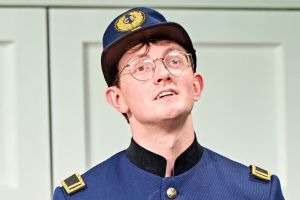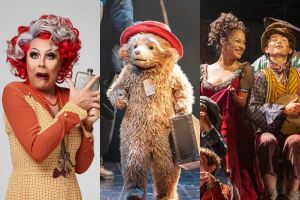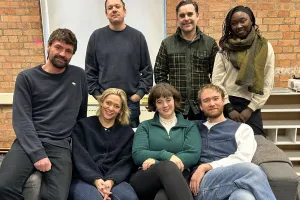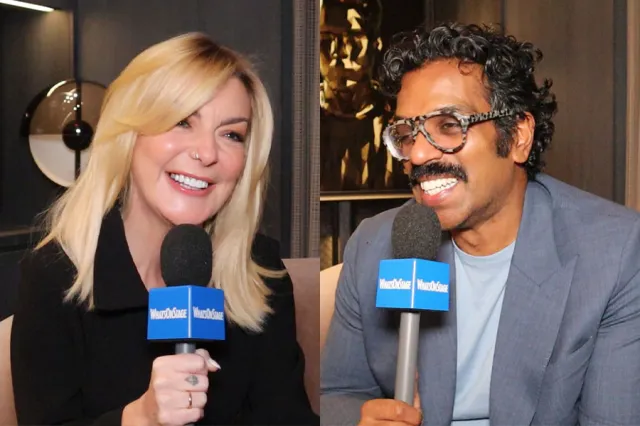Let's Talk About Sets: Lydia Monks on What the Ladybird Heard
The childrens’ book illustrator describes the process of taking this kids’ favourite from page to stage
I was delighted to be asked by Kenny Wax to be involved with the set design for What the Ladybird Heard. Kenny was really keen to transfer the look of the book on to the stage. He said he wanted the audience to walk in and think they were walking into one of my illustrations.
I had no experience of theatre design, so Kenny teamed me up with Bek Palmer, an amazing theatre designer who he had worked with before. We both came up with ideas for how the show should look, and Bek brilliantly translated the ideas into reality.
Initially, I made some tiny models of the key farm buildings that are in the book; the farm cottage, the barn and dog kennel. There were actually quite a few buildings in my original illustrations, so I had to select the most important. We were a bit concerned that with all those buildings, eleven animals and four actors, we’d have trouble fitting them all on stage.
The robbers, Lanky Len and Hefty Hugh, arrive in a big black van. This van transforms itself into the robber’s lair, in which they decide on their cunning plan. I cut out a tiny van out of card, which had side doors, which open to reveal the robber’s den. Bek then went away and drew measured drawings for the set makers. The next time I saw it was when it was pushed on to the stage. It was so exciting to see!
Another problem to solve was what to do with all the animals. There are eleven animals in the story, of varying sizes, all of which have to be handled by the four actors. It was decided that the prize cow should be a puppet, along with the two cats, who would act as commentators on the action. Kenny said he wanted them to be like Statler and Waldorf, the two grumpy old men from The Muppet Show.
The rest of the animals were created out of bits and bobs found around the farmyard. A goose made out of a watering can. A pig made out of a barrel, and a dog made out of a broom. Amazingly, they actually look like the characters I drew in the book! We discovered that once their eyes were added, the inanimate objects came to life.
The ladybird herself was tricky too, as she is so small. She appears in a few different ways throughout the play. Sometimes she is lit up in a tree, and sometimes as a little red light you can follow around the stage.
It was an absolute pleasure to be involved with the transformation of What the Ladybird Heard into the stage production. It’s not an easy task to transform a story which takes five minutes to read into an hour long performance. The integrity of the book has been retained, and I think its many fans will enjoy seeing all their favourite characters brought to life.
What the Ladybird Heard runs at the Lyric Theatre, London from 5 July to 10 September.












